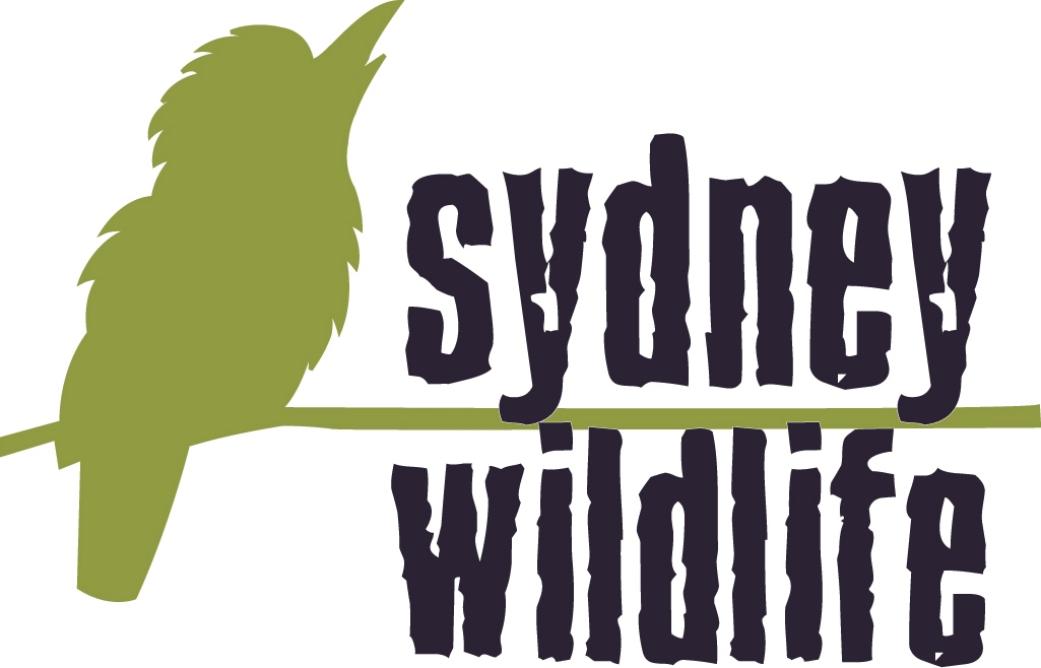April 9 - 22, 2017: Issue 308
A Week In The Life Of A Sydney Wildlife Volunteer

A Week in the Life of a Sydney Wildlife Volunteer
Sydney Wildlife is turning 20 in May! I would’ve loved to be one of the original members but, alas, I only joined 5 and a half years ago.
In celebration of our 20 Year Anniversary, I have been asked to share a typical “Week in the Life of a Wildlife Rescuer”…
One always begins the week with all kinds of plans for scrubbing out the aviaries, tidying out the overflowing cupboard of animal-feeding accoutrements and attacking the ever-burgeoning pile of paperwork. But wild critters have no idea about these plans, apparently…
The first call comes through. A wallaby has managed to get its head stuck in a plastic lid. Without opposing digits, it has no hope of releasing itself from its rather ridiculous-looking bib.
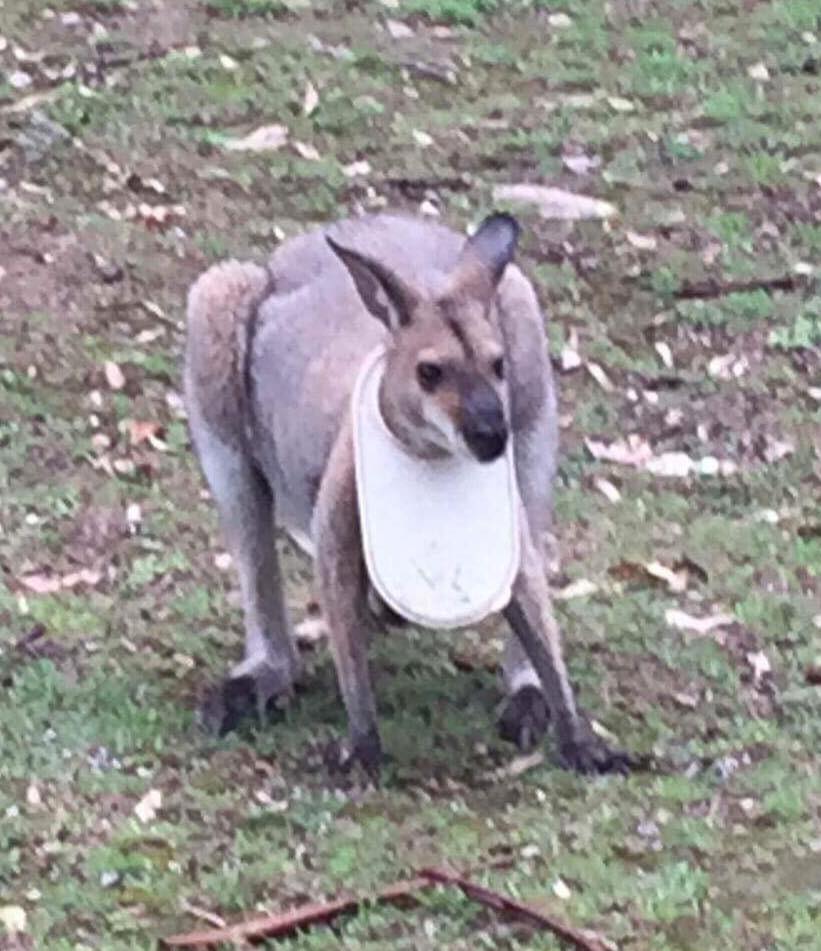
So it’s off to the safe to pack up the tranquilliser rifle and the myriad darts, needles, meds, cartridges and other things that are required to sedate the poor critter for the removal of the plastic noose. Then the long trip up the mountain to find a wallaby that is not in an enclosed space but has been sighted in 1 of 4 different places. Sigh. A long day ahead…
Well, after about 3 hours of searching, we eventually find him at exactly the location where we started our search - typical. Load the dart into the rifle, aim and fire. In around 5 minutes this rather large boy is in sleepy mode, dreaming of pink unicorns. The plastic was not difficult to remove. And there’s time for a quick health-check before he wakes.
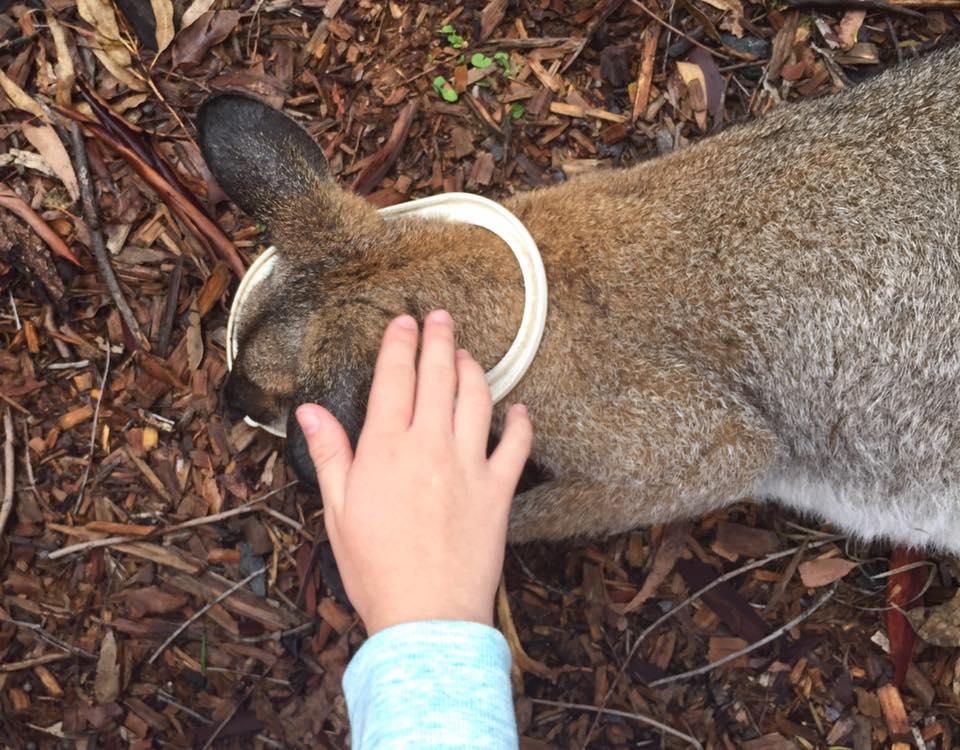
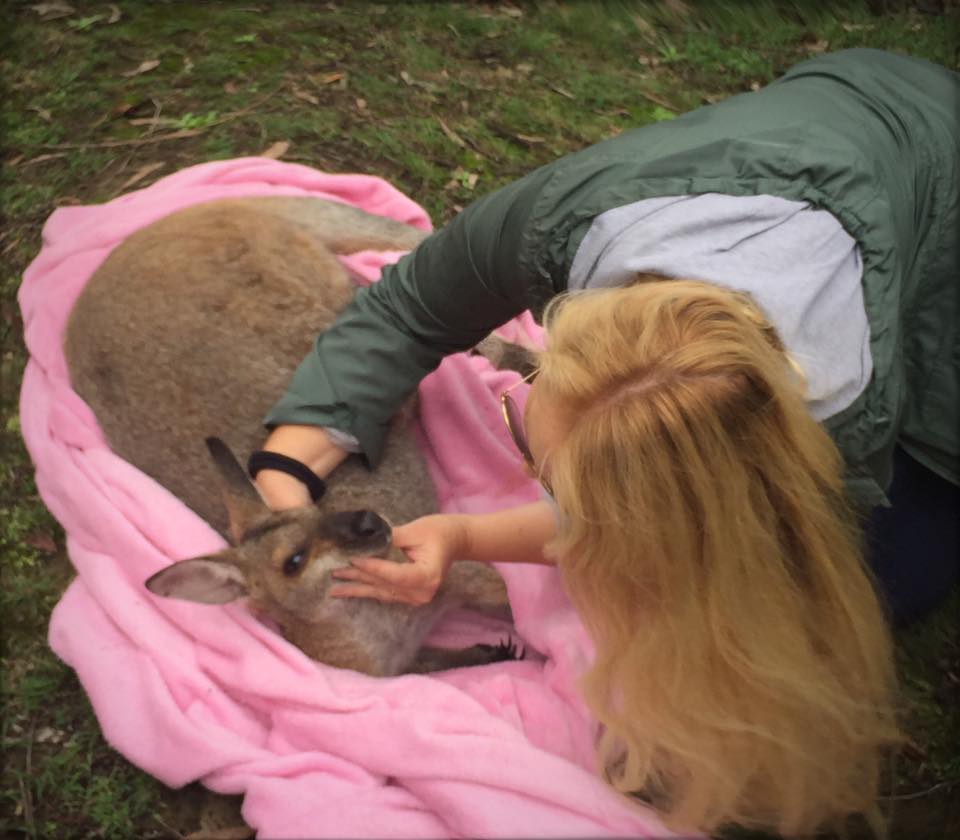
Back to the ‘Big Smoke’ where a tawny frogmouth has been found on a school oval near the soccer nets. The grounds staff are keeping a watchful eye on it as I’m not sure they believe me when I mention that it is not an owl but a nightjar. I drive onto the oval to find the tawny struggling to stand and flopping onto his face. I scoop him up and pop him into a carry-cage and head straight to a veterinarian. I suspect that he may have been clipped by a car and ended up on the field. A clinical examination and x-rays reveal that he has a fractured tibiotarsis (leg bone). Poor critter. The veteriarian reduces the fracture and starts to splint it. Immobilising the fracture reduces the pain significantly. The tawny gets pain relief and a pretty blue vet-wrap bandage. On the trip home, I stop off to buy tawny food from Pat’s Rats. Fuzzy mice - yum!
Once the tawny is set up in an enclosure, it’s time to feed all the other critters in care. The blue-tongue lizards get pinkie mice, the snakes get rats and the dragons get a smorgasbord of crickets, mealworms and woody cockroaches. Bleugh. Glad my dinner is a little less revolting…
First job of the next day is a simple python relocation. Yeah, right.
I arrive at the home of a fairly anxious member of the public. The diamond python is curled up on her deck beside a pot-plant. Apparently she’s been there for a couple of days. I’ve seen pythons in lots of places - draped over balcony railings, up in stable rafters, beneath shrubs, in kitchen cupboards… So this isn’t particularly strange. But as I pick her up, I feel a really large and firm lump right near her cloaca (bottom). I manipulate the bulge a bit to try to ascertain what it is. Well, whatever it is, she can’t be relocated without further investigation. So into the bag she goes and off home for a soak in a bucket of warm water. With a heat-mat under the the bucket, the water will stay warm enough for a nice hour-long soak. I am still under the impression that she is suffering a faecal impaction and that the warm water might move things along a bit. After an hour and a half in the water… Nothing. So another hour’s bath. Nothing. My son gets the dubious honour of holding the ‘bitey’ end while I do some manipulation of the colon to see if that helps. Nothing.
Hmmmmm. Maybe we’ll try again tomorrow.
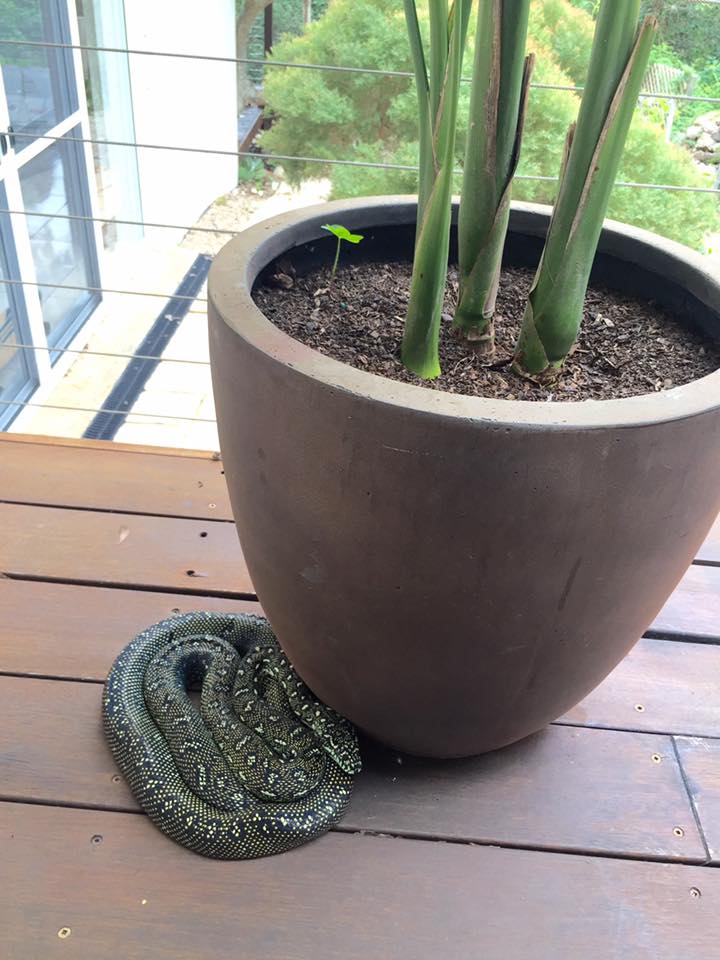
Meanwhile it’s time to weigh the ringtail babies to see if they are ready to be transferred to our Pre-Release Facility in Duffy’s Forest. Joan Reid, our Facility manager, is busily preparing the large aviary for the arrival of my batch of 5 ringtails. She has also just received 2 adorable wallaby joeys who are ready for ‘big school’ and is simultaneously attempting to capture one of the bigger wallaby boys who is ready for release back to the wild.
I weigh the biggest ringtail of the batch - a beautiful and gentle boy called Diggle. The other male is a nut-case. He wants nothing to do with being weighed and almost takes a chunk of flesh out of the back of my hand. Two of the little females are just as unwilling to be handled which is a good thing as we need them to be wary of humans before their release. The third little female is like a pocket-rocket. In her quest to be surgically attached to me, she is as quick as lightning. The second she hears the aviary door opening, she prepares to catapult herself onto my face. Sheesh - another scratch to add to the growing collection. She loves me. Which is a problem. Little Felicity is small and rather hyperactive but for some reason (despite being raised exactly the same way as all the other 4) she has decided she would rather be a human than a possum. The reason the Pre-Release Facility was started by Joan, was for exactly this situation. Hand-raised orphans can sometimes become too ‘humanised’. Releasing a humanised animal into the wild doesn’t give them very good odds for survival. So Joan is in charge of ‘tough love’. At the Pre-Release Facility, the orphans learn to be wild and become ‘dehumanised’. They learn to cope with the weather, parasites, finding their own food and mingling with other wild animals. They learn not to depend on humans - all in a predator-free environment. This will stand them in good stead for assimilation into the wild.
With the weigh-in complete, I decide with a heavy heart that my babies are ready to graduate. After a quick call to Joan, I hop in the car and drive the nest of babies up to Duffy’s Forest. Along the way I pick delicious foliage for the babies to add to their new aviary. I also stop off at Petstock to buy some more turtle food for the rehabilitating turtles up at the Facility. As I arrive, the heavens open. Yay… Not. Soggy wallabies bound around inside the paddock. Soooooo cute. Joan is attempting to catch a kookaburra inside one of the enclosures for a visit to the local veterinarian. His flight training isn’t going as well as expected so he needs a health-check.
Joan and Jenny have been prepping the aviary and the babies are ensconced into their new palatial digs.
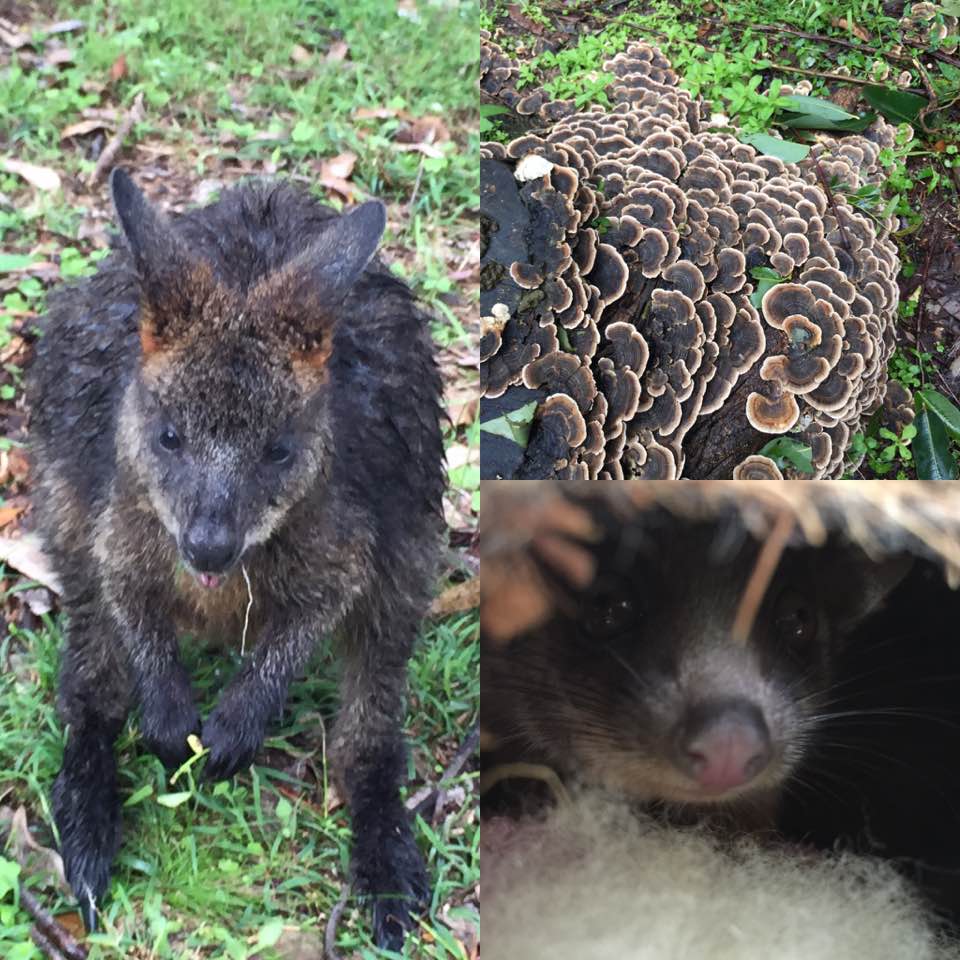
On the way home, I see a rainbow lorikeet standing on a driveway with its head bowed. This is not normal lorikeet behaviour. I pull over and grab a towel from the boot. In silent gesture, I put my hand up to halt a lady walking her three dogs as they are approaching the lorikeet unawares. They stop and watch as I try to gently cover the lorikeet with a towel. Does it go to plan? Ha! He perks up and starts screeching like a banshee and running about like a headless chook. One thing’s for sure, though - he can’t fly. My guess is that he has collided with a vehicle. So back to the local veterinarian. As I arrive, I’m called out to assist one of my snake-handlers who is grappling with a tonne of firewood on a property where the owner has filed a report of a tiger-snake! The lorikeet is whisked off to the holding area and I’m ushered out. I jump in my car in excitement. A tiger snake!!! Haven’t seen one of those in that particular area in over 10 years!!!
Before I can get there, my trustee snake-wrangler - Georgie - has taken on the big fellow single-handedly and won! What a gal :) She’s dripping sweat and adrenaline and is talking faster than a teenager on their 6th Red Bull. I am completely in awe of this amazing woman :)
She definitely thinks the big boy requires a health check as she noticed a rather raw injury to his dorsal scutes and she also noted that he felt a little underweight. I am very happy to oblige with the health-check and pop the precious cargo into an escape-proof lockable box for transportation back to my ‘examination table’. The examination table is a little less amazing than it sounds. In reality, it’s just a pool table with a cover, but it works a treat.
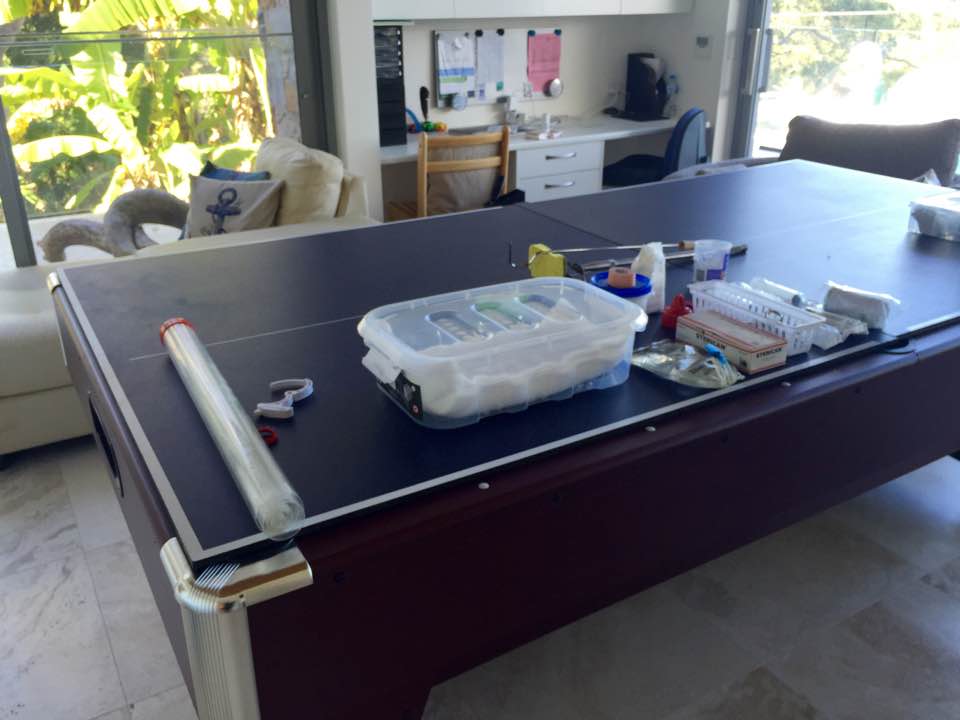
The tiger snake has been named Nash by the member of the public from whose woodpile he was expertly extracted by our Georgie.
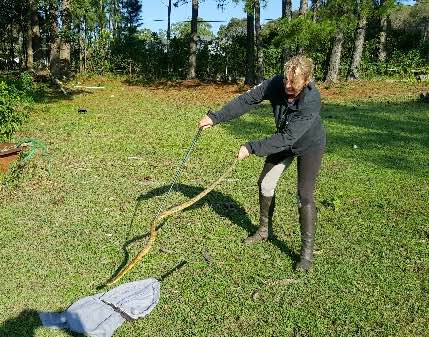
Georgie grappling with the 1.4m tiger snake. What a woman!
I tip Nash out of his bag and he comes out swinging! What a firecracker! Woooooohooooo!
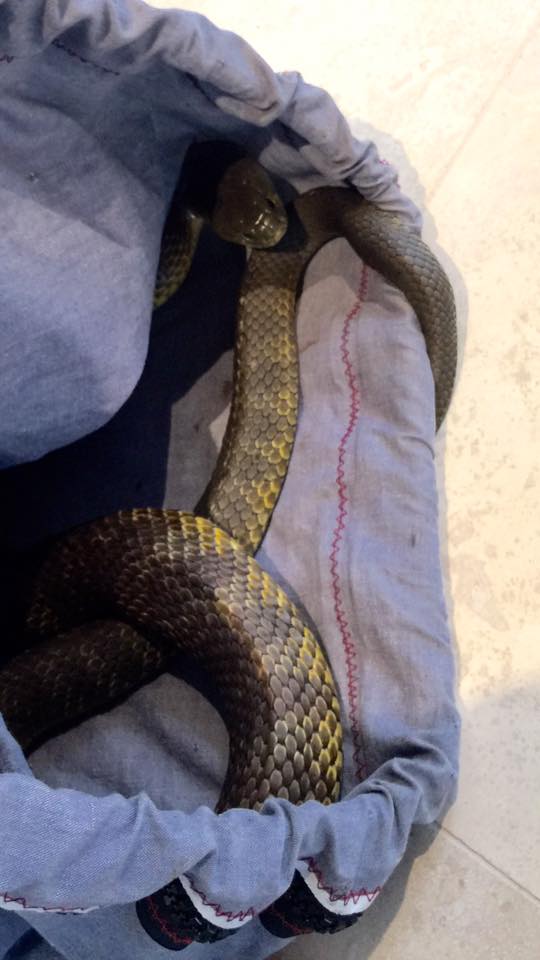
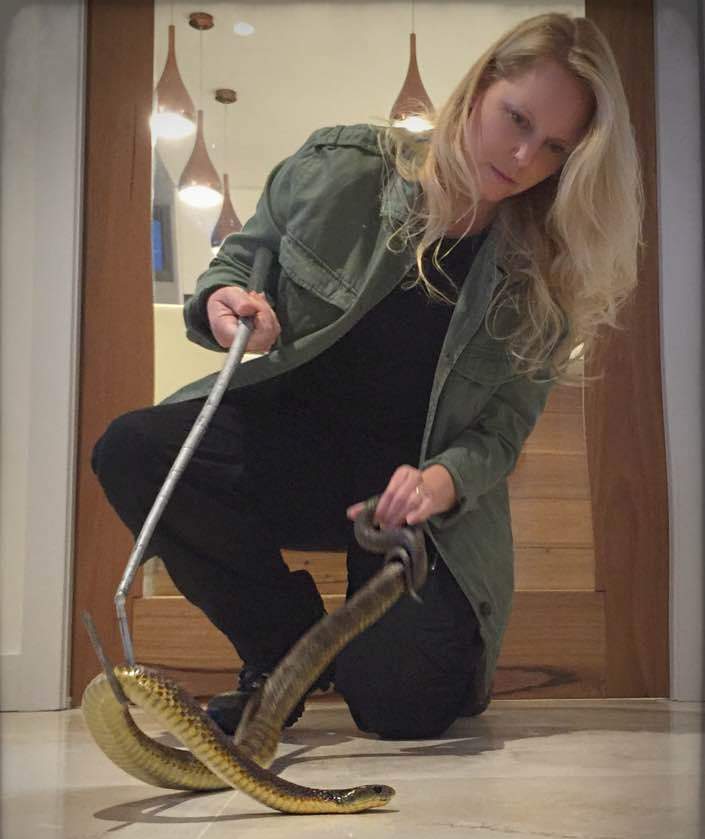
We chase each other around for a while and I eventually get him into the tube for a closer inspection of that wound. Georgie was right - he’s very underweight and I need to find out why. I slowly extract him from the tube until I can restrain his head. And I have a good look into his mouth. Hmmmm - very red, inflamed and sore. Possible stomatitis. This would certainly be a symptom of a systemic infection. After consulting with a Reptile Veterinarian, I start him on intramuscular antibiotics and wash out his mouth with an antiseptic. I give subcutaneous fluids to address his dehydration. He’s soon dozing on a lovely warm heat-mat in his temporary home.
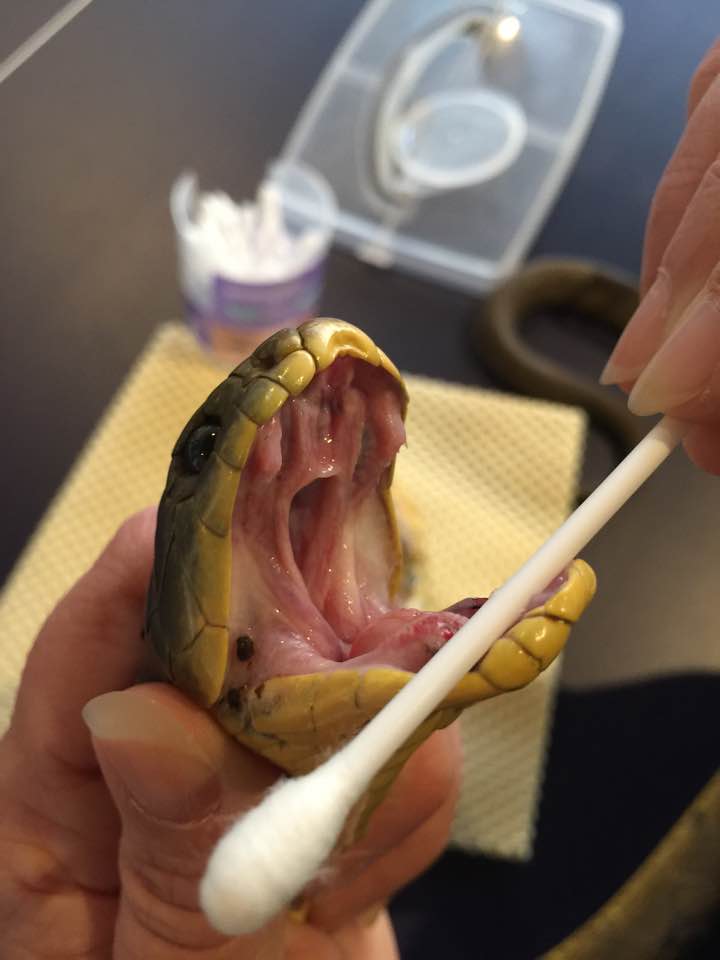
“To Be Continued” in our Anniversary month of May…
By Lynleigh Grieg
Sydney Wildlife
Lynleigh Grieg is not too good at sounding her own trumpet so we take great pride in announcing she was recently awarded a Certificate of Recognition for all her hard work through the 2017 Eco Awards presented annually by the Manly Environment Centre - the awards presentations were held on March 30th, 2017.
Each year Members of the community are encouraged to nominate a ‘conservation hero’, someone who deserves acknowledgment for their outstanding environmental and conservation work to protect our unique natural environment. This includes, of course, the inhabitants of these environments and those who work to rescue distressed and injured birds, reptiles and animals.
It would be hard to count how many native animals Lynleigh has rescued and cared for. Sydney Wildlife carers, rescuers and their ably supported pro bono vetinarians must have rescued one million by now.
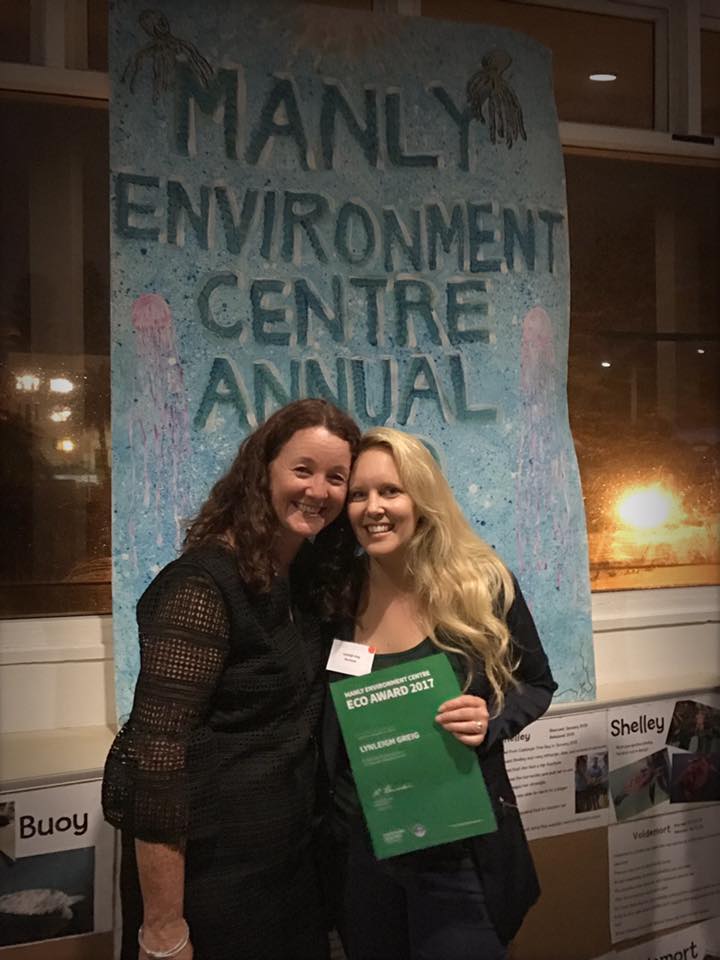

Lynleigh being presented with her Certificate of Recognition by Kylie Ferguson, former Deputy Mayor of Pittwater Council and Current NBC facilitator in the area of Environment.
Sydney Metropolitan Wildlife Services Inc., is referred to as Sydney Wildlife and was launched in May 1997.
As the name suggests, Sydney Wildlife operates in the Greater Sydney Metropolitan Area which extends from the Hawkesbury River in the north, to Picton in the south and from the foothills of the Blue Mountains to the ocean.
As well as caring for sick, injured and orphaned native wildlife, Sydney Wildlife is also involved in educating the community about native wildlife and its habitat. From kindergartens to retirement villages, community education packages are tailored to meet the specific needs of a wide range of audiences.
Sydney Wildlife is an entirely voluntary, charitable organisation. There are no paid staff what-so-ever.
Sydney Wildlife is licensed to do the work it does by the National Parks and Wildlife Service under the National Parks and Wildlife Act, 1974.
To support their great work, please visit: www.sydneywildlife.org.au
